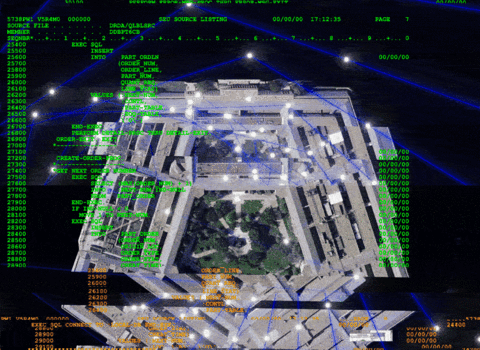The notion that Washington politics are dominated by bitter partisan rivalry between the parties is conventional wisdom these days. In reality, on important matters such as measures desired by major banks or the defense industry, the parties are happy to cast aside petty differences in pursuit of a higher good—not to mention campaign contributions. For a recent example of comradely bipartisanship, look no further than House Resolution 758, passed on December 4 with an unequivocal majority of 411 votes to 10.
H.R. 758 strongly condemned “the actions of the Russian Federation, under President Vladimir Putin, which has carried out a policy of aggression against neighboring countries aimed at political and economic domination,” charging the evil empire with “invading” Georgia, in 2008, and Crimea, in 2014, as well as imposing “trade barriers as weapons to apply economic and political pressure.” The bellicose measure passed with little debate, though Californian Republican Dana Rohrabacher, one of the five Democrats and five Republicans who dissented, has since denounced the resolution as being “tantamount to a declaration that Russia is America’s enemy” with wording that “spilled over with uncommon vitriol and inaccuracy.”
Money speaks louder than words, and a few days later, Congress endorsed a $554 billion defense-spending bill that included $810 million for the “European Reassurance Initiative,” requiring that “not less than $175 million be spent in support of Ukraine and the Baltic nations.” That “not less than,” according to expert defense budget analyst Winslow Wheeler of the Project on Government Oversight, should be translated as, “hook up hose to Treasury, suck out as much as you want.”
In short, in the immortal words of Diane Sawyer (quoted in my piece on this topic in the January issue of Harper’s Magazine), it’s “game on” for the U.S. and Russia, again. Other signs of a Cold War reprise may be less obvious to the general public, but they evoke heartfelt nostalgia among defense insiders. One may recall that, during the Cold War, the capabilities of Soviet defense technology were regularly inflated to frighten lawmakers into consigning our hard-earned dollars to the tender mercies of the military-industrial complex. Generals and admirals regularly attested to the miraculous powers of newly spotted Soviet tanks, aircraft, and submarines. Once in a while a defector would turn up with an actual specimen, often an unwelcome intrusion, since these usually turned out to be underperforming clunkers that belied the inflated threats of budget-hungry Pentagon chieftains. (My favorite was the allegedly fearsome T-72 tank that nonetheless displayed an unwelcome tendency to load the gunner into the main cannon.)
Now, like the first signs of spring, Russian weapons systems are once again being brought out of the shadows to enjoy glowing praise. “The Russian Bear Roars in the Sky. Beware the SU-35 Fighter,” wrote a defense-aviation specialist in a recent article for the National Interest, which ascribed near-miraculous capabilities to this new Russian warplane. “It’s a great airplane, and very dangerous,” declared one U.S. defense official quoted in the piece, while others spoke gloomily about the threat it poses to its latest U.S. equivalents.
In truth, the SU-35 is another clunker. Pierre Sprey, co-creator of the USAF’s F-16 and A-10 fighters, has analyzed the plane’s performance parameters and told me that it’s a “turkey” and a “pig in maneuverability.” “The Air Force and Navy threat-inflators,” he said, “are happily engaged in touting the imagined wonders of Russian and Chinese fighter technology and producing heaps of horseshit not seen since the glory days of the CIA and DIA lying about the Mig-21.”
It is not just the Air Force and Navy that are looking to resurrect the Russian Bear. There’s plenty in it for the Army too. “Vladimir Putin has solved the sequestration problem for us because he has proven that ground forces are needed to deter Russian aggression,” declared Congressman Mike Turner, an Ohio Republican and chair of an important defense subcommittee, at an October forum hosted by the Bipartisan Policy Center, a growing presence among the stews of Washington think tankery.
Only one thing could mar this Cold War renaissance: noncooperation by the other party. To be sure, Putin has done all the right things so far, such as looking mean and annexing Crimea. But his interventions in eastern Ukraine have been markedly timid. Despite alarums from the likes of John Kerry, the Chauncey Gardiner of international diplomacy, who warns of tens of thousands of Russian soldiers committed to the fight, the largest force Putin has sent into action is a mere four battalions, at Novo Azovsk in the summer, since withdrawn. More recently there have been signs that any plans Moscow harbored for hiving off portions of eastern Ukraine are being abandoned. In any case, the oil price collapse, as generated by our good friends the Saudis in hopes of neutering our own resurgent oil industry, is putting paid to any projected Russian defense buildup.
Nevertheless, with budgets and political ambitions at stake, Cold War II is too big a prize to be discarded lightly. Defense-industry lobbyists greeted the Crimea takeover with “borderline euphoria,” according to a friend of mine who observes them at close quarters. As the vote on House Resolution 758 indicates, the mood won’t be allowed to pass anytime soon.
Subscribe to Harper’s Magazine today and receive instant digital access to “Game On”—plus our entire 164-year archive.









































































































